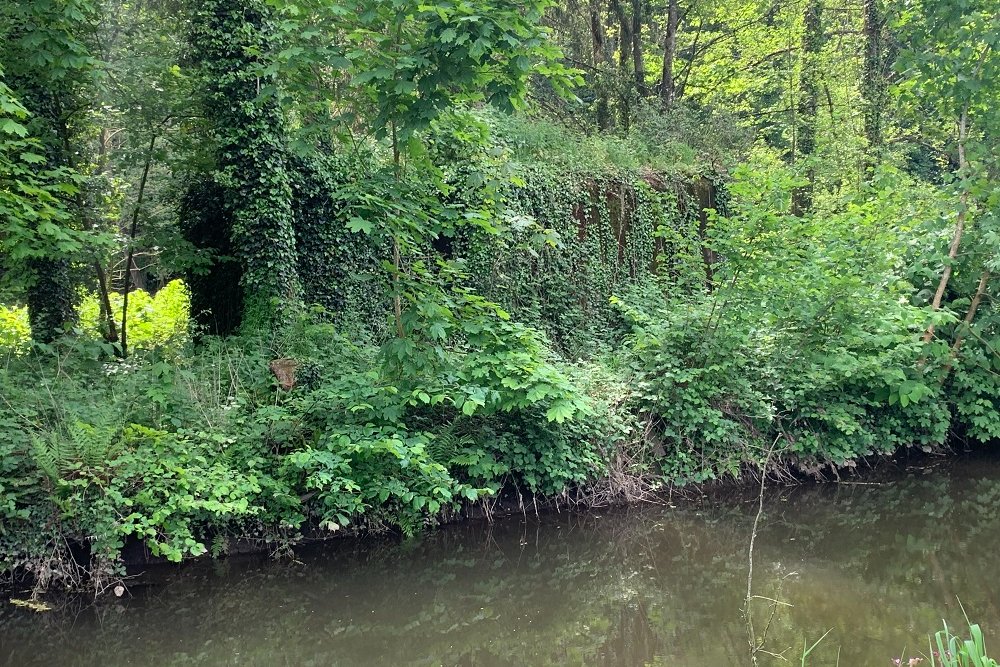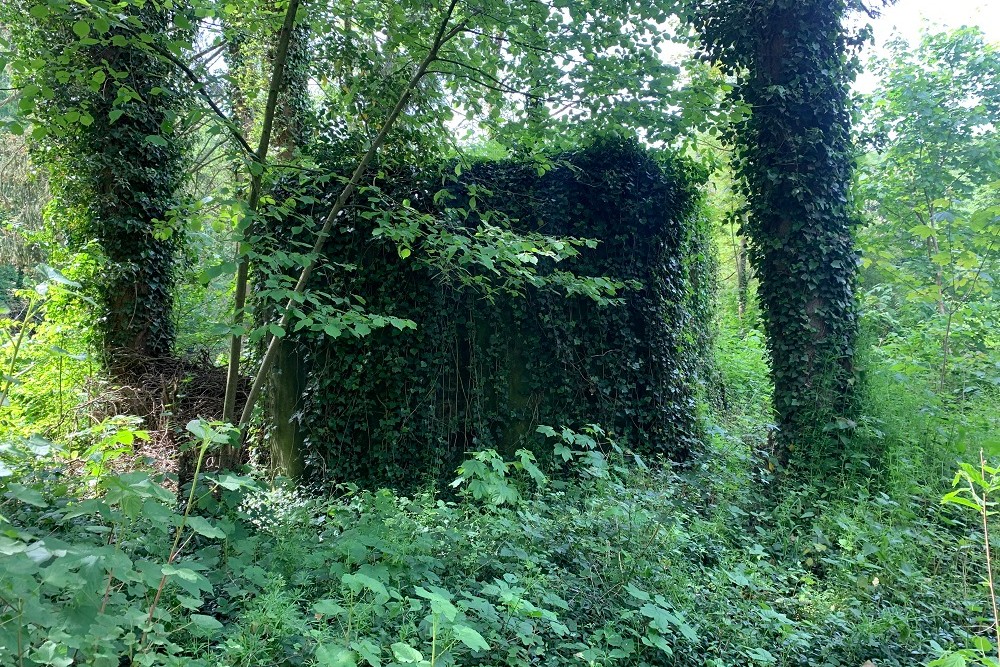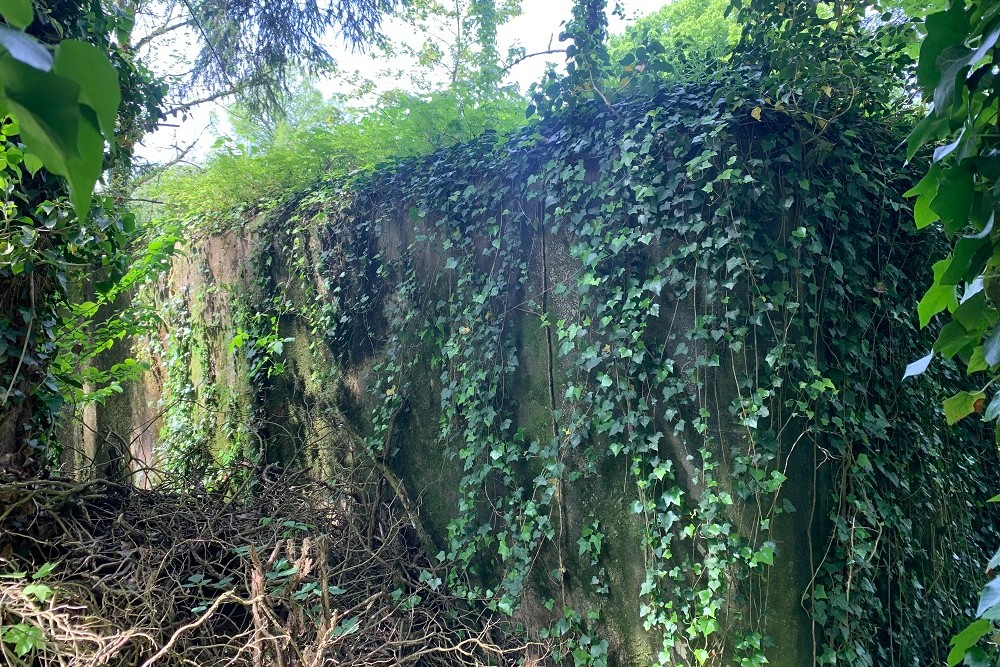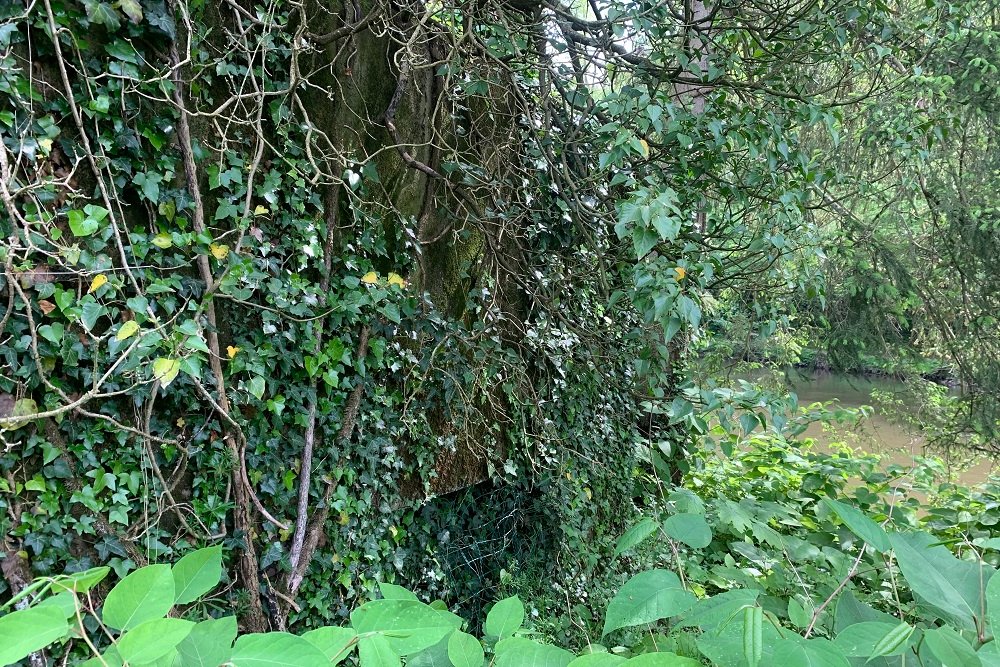Bunker CS 12 Aywaille
This is bunker CS 12 from the Comblain-Sougné sector of the 1st line of defense for the city of Liège, la Position Fortifiée de Liège 1 (PFL 1).
This was the last sector of the PFL 1. This sector ran west into sector Sougné-Becco (SB). Sector CS consisted of 31 bunkers to the south and west of the once planned but never built Fort de Sougné-Remouchamps. The bunkers were built in the early 1930s.
The bunker is located in on a PRIVATE LAND, an estate, in a forest plot on the Amblève river and a meadow. The estate and the bunker are NOT visitable! Only because I happened to run into the owner of the plot when I was searching for this bunker in the woods near his large estate and got in to a conversation with him, I was invited by him to his estate. He was surprised that I knew of the existence of the two bunkers on his property. He pointed them both out to me and told me how he used to play around them as a child.
Even standing 20 meters away, I didn't see the bunker. It is that the estate owner pointed out to me where it stood. Almost completely overgrown with ivy and surrounded by high bushes and trees, this bunker was also located at the edge of his estate on the Amblève. Unlike bunker CS 10, it was constructed without further camouflage. The normal typical concrete bunker that can be found all over the PFL. he bunker is located on an island in the Amblève River. Whether it was the same in the 1930s is unknown.
The bunker is equipped with one gun opening for a machine gun. This is located on the west side (photo 4) facing upstream of the Ambléve and could therefore co-defend bunker CS 10. The bunker is no longer accessible, the door opening has been bricked up. The walls are 1.3 meters thick on all sides and made of reinforced concrete. They could withstand shelling with 150mm shells.
The metal shutters in front of the gun opening were removed after the war. These were sold as scrap metal when the bunkers had lost their strategic value for the defense of Belgium.
Do you have more information about this location? Inform us!
Source
- Text: Ed Lewandowski
- Photos: Ed Lewandowski
Nearby
Museum
Point of interest
- Memorial Fraiture - Fraiture
- 3.5 km
- Memorial Fraiture - Fraiture
- 3.5 km
- Château De Harzé - Harzé (Aywaille)
- 4.2 km
Monument
- War Memorial Rouvreux - Sprimont
- 1.3 km
- War Memorial Florzé - Rouvreux-Florzé (Sprimont)
- 1.5 km
- War Memorial Aywaille - Aywaille
- 1.6 km
Cemetery
- Belgian Graves Veterans Florzé - Rouvreux-Florzé (Sprimont)
- 1.8 km
- Belgian Graves Veterans Awan - Aywaille
- 1.9 km
- Belgian Graves Veterans Aywaille - Aywaille
- 2.5 km
Fortification
- Bunker CS 10 Aywaille - Aywaille
- 0.1 km
- Bunker CS 13 Aywaille - Aywaille
- 0.3 km
- Bunker CS 13 bis Aywaille - Aywaille
- 0.8 km








